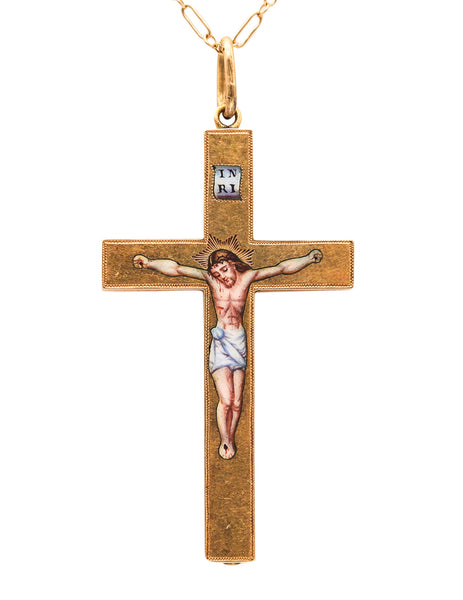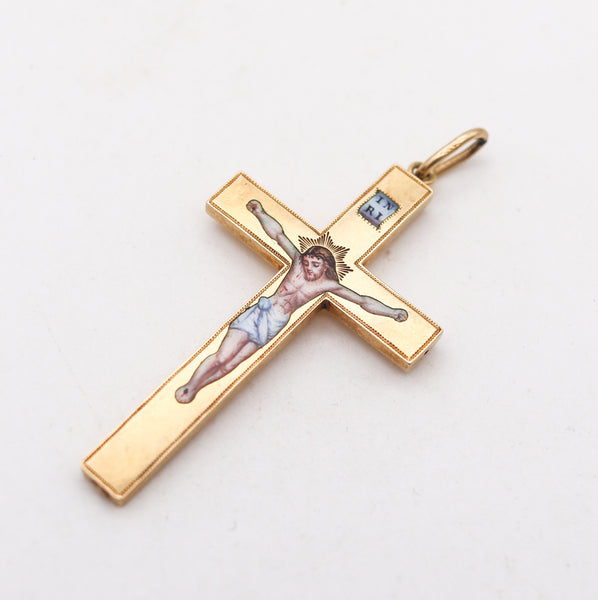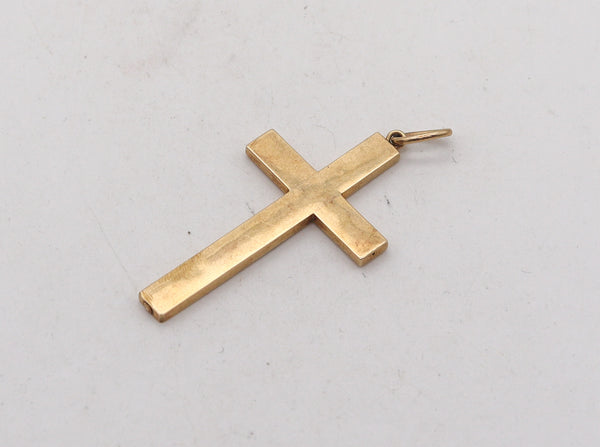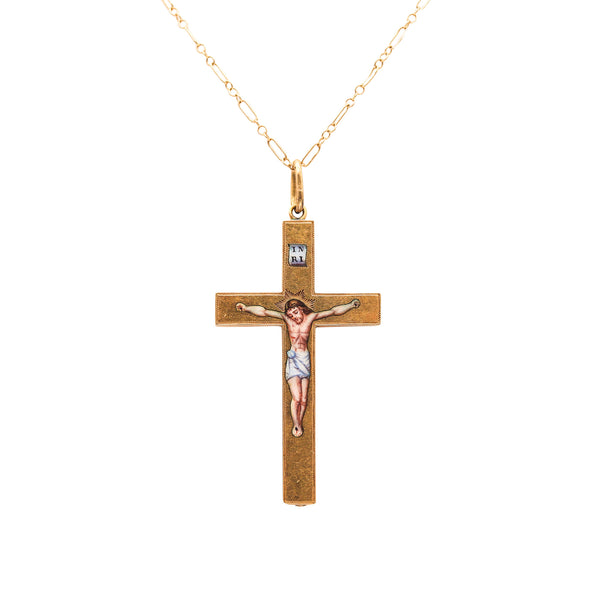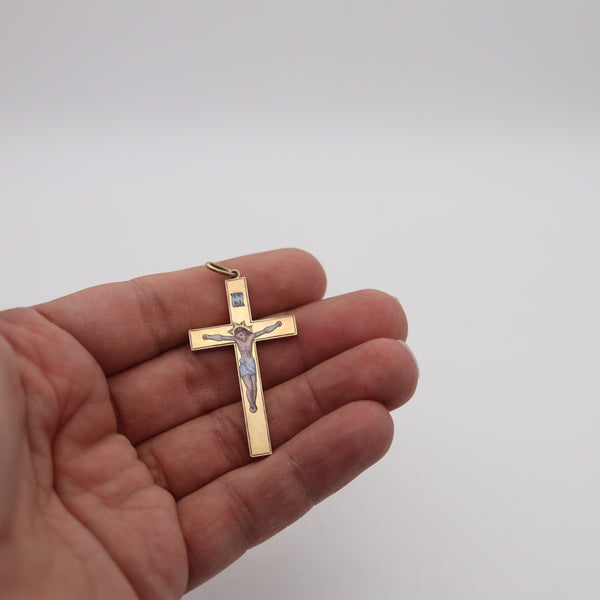BYZANTINE REVIVAL 1850 Enameled Polychrome Cross In 18Kt Yellow Gold
Byzantine revival enameled Christian Cross
Fabulous antique cross, created in Europe in the middle of the 19th century, circa 1850. This exceptional rare cross has been crafted with Byzantine and renaissance revival patterns in solid yellow gold of 18 karats with polished finish and fitted on top with a movable ring to wear in a chain. The cross is embellished with a gorgeous inlaid figure of a crucified Christ decorated with the difficult polychrome enamel technique, called Peinture sur émail. The craftmanship is exceptionally well done and surely is a one-of-a-kind conversation piece.
Peinture sur émail technique
Peinture sur émail is a French type of painting with enamels. It was developed at the end of the 15th century in Limoges, France. In this technique, a slightly convex, metal plate is covered with a fondant of uniform color which was fired to produce a vitreous base for the drawing. On this, the artist starts applying color after color in thin layers onto the base color with a paintbrush. It is vital that one starts with the colors of the highest flowing temperature to avoid the diffusing of colors at a later stage. Between every step, the intermediate depiction needed to be fired in the oven to fixate the colors, sometimes up to 20 rounds of heating are needed for the final result. In this manner, one was able to rival the oil painters of the day and artists such as Leonard Limousin were in high regard, often even employed by the patrons of the arts. Needless to say, that this type of enameling was no longer in the realm of goldsmiths but belonged to those with exceptional drawing skills. At the end of the 16th century the abundance of workshops that produced these artifacts – these could be a meter high – created a decline in craftsmanship which is usually associated with popular cultures. Like Castellani rescued the micro mosaics from general decline by giving it a new impulse so did Jean Toutin from Blois, France give a new incentive to painted enamel in the early 17th century by introducing miniature paintings on enamel of high quality. In Geneva, Switzerland, there was a culture of painting enamels from the late 15th century as well, but the industry only really started to flourish mid-17th century. They specialized in portraits as in scenery images which soon attracted the attention of customers from all over Europe and beyond. Famous Genevan names of the day were Jean Petitot, Jean Etienne Liotard and various members of the Huaud family. Their products remained fashionable well into the 19th century until the application of photography, which they could not rival. Around the same period, ca. 1840 the Genevan enamellers started producing jewelry in the neo-renaissance taste. These were however of a lower quality than their counterparts made abroad by master's as Giuliano. (From Lang with thanks)
Weight: 3.6 Grams, (2.32 Dwt).
Measurements: 27 mm by 56 mm (1.06 x 2.21 Inches).
Hallmarks: Un marked, but electronically tested for 18kt gold (.750/.999 Au)
Collateral: This cross is accompanied by a presentation jewelry box.
Condition: The overall condition of this cross is excellent. Beside the little normal wear, there is no damage to the gold. The enameled parts are secured in the settings. This piece has been carefully inspected to guarantee the condition and authenticity.
INVENTORY REF: P030424MSEN/.0866







